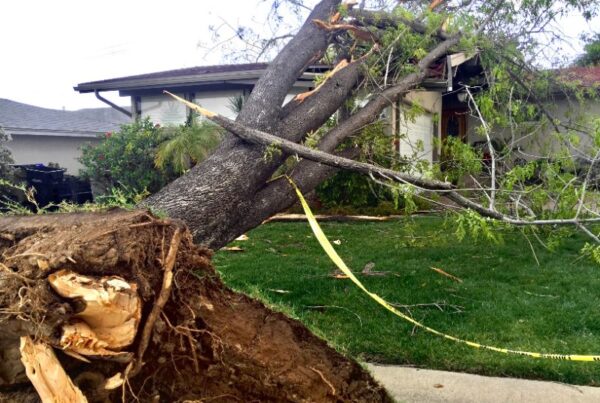Why Texas Construction Defect Lawsuits Are on the Rise
Imagine coming home to your brand-new Texas house and noticing cracks snaking up the walls after the first heavy rain. For many Texans, this nightmare is becoming a reality. Construction defect lawsuits are about to explode in Texas, and it’s not just the wild weather causing it. Yes, the Lone Star State’s climate can be brutal on buildings – extreme heat and clay-rich soil can make foundations heave and walls shift – but there’s more at play. Texas is in the midst of a homebuilding boom, with nearly 2.5 million homes (22.5% of the state’s housing) built since 2010. Rapid development, rushed work, and even new legal changes are converging to put homeowners on a collision course with builders.
It’s a perfect storm: fierce weather, frenzied construction, and frustrated homeowners. If you’re dealing with a shoddy new home or structural issues, you’re not alone – and you have options. In this article, we’ll unpack why these construction defect lawsuits are surging, explain the Texas laws that protect you, and outline how you can fight back and fix your home. Let’s break it down step by step.
Don’t let your dream home become a legal and financial nightmare. If you’re facing cracks, leaks, or other severe defects in your newly built Texas home, it’s time to take action. JCE Law Group helps homeowners like you hold negligent builders accountable and recover the cost of repairs, damages, and peace of mind. Call us today at (504) 754-5884 or contact us for a free consultation. The law is on your side—but only if you act before the deadlines pass

Understanding Construction Defect Lawsuits in Texas
When your dream home turns into a disaster, the law calls it a “construction defect.” In plain English, a construction defect is any serious flaw in the design or building of a house – think foundation cracks, water leaks, mold, bad wiring, or crumbling stucco. These aren’t minor cosmetic issues; they’re problems that make your home unsafe or unlivable. For example, in one recent Texas case, homeowners discovered that poor construction left their new houses riddled with mold, to the point that the homes were “unlivable”. Stories like this are unfortunately becoming common.
How do Texas laws handle these situations? First, Texas has specific rules to encourage fixes without lengthy court battles. The Residential Construction Liability Act (RCLA) (Texas Property Code Chapter 27) requires homeowners to give the builder a chance to make it right. In practice, that means before filing a lawsuit, you must notify the contractor in writing about the defects and allow them to inspect and offer repairs. This process is intended to resolve issues amicably if possible – but if the builder ignores you or provides a band-aid fix that doesn’t cut it, you can move forward with legal action.
Texas law also sets strict timelines on defect claims. There’s a statute of limitations that generally gives you up to 4 years to sue for breach of contract (e.g., the builder not delivering what was promised) under Tex. Civ. Prac. & Rem. Code §16.004. For negligence or other claims, you often have 2 years from when you discover the problem. Perhaps most crucial is Texas’s statute of repose, which is like a final deadline: you cannot file any construction defect lawsuit more than 10 years after the home was completed (see Tex. Civ. Prac. & Rem. Code §16.009). In 2023, Texas even tightened this law – if your builder gave you a state-approved warranty, the warranty period might be only 6 years. In short, don’t delay. If you suspect a defect, the clock may already be ticking on your right to seek justice.
Timeline: Steps to Take After Discovering a Defect
-
Document the Problem (Immediately): As soon as you notice a construction issue, take photos, videos, and notes. Record the date you found it and any damage it’s causing. Early documentation builds your case and can even help experts later determine when and how the defect arose.
-
Notify the Builder in Writing (Within Weeks): Texas law (RCLA) requires you to formally notify the contractor or homebuilder about the defects at least 60 days before filing a lawsuit. Send a detailed letter by certified mail describing each problem. This triggers the builder’s opportunity to inspect and fix the issues. Keep a copy of the letter and the mail receipt.
-
Allow Inspection or Repair Offers (Next 35–60 Days): After notice, give the builder a fair chance to respond. They may schedule an inspection (often within 35 days of your notice) to assess the damage. They might also propose a repair plan or settlement. You are not obligated to accept a cheap or inadequate fix, but you should review any offer carefully. It’s okay to get a second opinion from an independent engineer or home inspector during this time – you want to know the true extent of the defect.
-
Consult an Attorney (ASAP): It’s wise to talk to a construction defect lawyer early in the process. An attorney can help you draft the notification letter, interpret any offer the builder makes, and advise if it’s fair. They will also keep track of legal deadlines. Remember, evidence can deteriorate (for example, water damage or cracks can get worse), so an attorney might also help you get an expert report quickly. Early legal guidance keeps your options open.
-
File a Lawsuit (Around Day 60+ if Needed): If the builder denies responsibility, offers too little, or simply drags their feet, you may proceed to file a construction defect lawsuit in Texas once the 60-day notice period passes. Your lawsuit can demand the cost of proper repairs, related expenses (such as moving out during repairs), and other damages like diminished home value. Most cases settle before trial, but filing shows you’re serious. From here, your attorney will guide the lawsuit through the court or negotiation process. Keep in mind the overall 2-year, 4-year, and 10-year deadlines – filing sooner is usually safer.
-
Repair and Resolution: Whether through a negotiated settlement, the builder’s voluntary fix, or a court judgment, the goal is to get your home repaired and safe. Once resolution is reached, make sure to document all repairs and get a warranty on any repair work if possible. You want peace of mind that the issue won’t return.
By following these steps, you’ll cover your bases under Texas law and put yourself in the best position to get your home back in shape.
Finding Resolution for Property Damage and Next Steps
Discovering a significant defect in your home is overwhelming, but there are resolutions available. The first option is often working it out with the builder. If the builder is responsive, they might agree to repair the defect at their cost or pay for a third-party contractor to do it. In some cases, builders provide a home warranty that covers certain defects – always check your paperwork. But be cautious: accepting a quick fix or signing a settlement too soon could waive your rights if deeper problems emerge later. It’s okay to insist on quality repairs or to have an independent expert verify that the fix actually works.
If direct talks go nowhere, a construction defect claim can force the issue. Many defect disputes end in a settlement – for example, the builder (or their insurance) paying you a sum to cover hiring your repair contractors. Mediation is another path: a neutral mediator can often help both sides reach a compromise without a trial. These routes can be faster and less expensive than court, while still holding the builder accountable.
However, some cases must be fought in court. This might happen if the builder refuses to accept blame, or the defect caused extensive damage and losses. Through a lawsuit, you can ask a judge or jury to award you damages. In Texas, homeowners can recover the cost of repairs, the diminished value if the home’s worth has dropped, and related expenses like alternative housing or mold remediation. In egregious cases involving fraud (say, the builder knew of a defect and lied), additional penalties might apply. The goal is to make you whole – financially and in terms of getting a safe home – as much as possible.
Notably, most homeowners’ insurance policies won’t cover construction defects. Insurance may help with resulting damage (for instance, if a faulty pipe bursts and causes water damage, your policy might pay for the water cleanup). But the faulty workmanship itself is usually excluded from coverage. This means you often have to pursue the builder or responsible parties to fix the underlying issue. Knowing this, don’t rely on insurance to save the day – legal action may be your main recourse to address the defect and its costs.
Why JCE Law Group Is the Right Choice for Texas Homeowners
At JCE Law Group, we understand how deeply upsetting a construction defect can be – your home is your sanctuary, and we know what it means when that security is shattered. Our team has extensive experience helping Texas homeowners with property damage and construction defect disputes. We pride ourselves on being your advocate and ally every step of the way. Here’s what sets JCE Law Group apart:
-
Texas Construction Law Knowledge: We have a deep understanding of Texas’s construction laws and building codes (including all the latest updates). From the RCLA notice requirements to the nuances of statutes of limitation, we’ve got it covered. We know the tactics builders and their insurers use, and how to counter them while protecting your rights.
-
Proven Track Record: Our attorneys have helped clients resolve a wide range of home construction issues – foundation failures, roof leaks, toxic mold, and more. Whether through negotiated settlements or courtroom litigation, we fight to get homeowners the repairs and compensation they deserve. We don’t back down against big builders or insurance companies.
-
Personalized Attention: We treat every case as if it’s our only case. That means listening to your story with compassion and empathy. We’ll investigate the defect thoroughly, bring in qualified experts (engineers, inspectors) to strengthen your claim, and keep you informed at each stage. You’ll never feel like “just another file” with JCE Law Group.
-
No Upfront Cost Peace of Mind: Construction defect cases can be expensive to pursue, but JCE Law Group offers free consultations and works on contingency for these claims, which means you pay nothing unless we win. We take the financial burden off your shoulders so you can focus on your family and your home.
When your “dream home” turns into a legal battle, you need a team in your corner that truly cares and has the firepower to take on any opponent. JCE Law Group is ready to be that team for you.
The Texas Climate Connection: Weather, Soil, and Construction Defects
Texas’s reputation for wild weather is well-earned. One week you’re facing torrential rain, the next a dry heatwave – and your house bears the brunt of it. But while weather is often blamed for cracked foundations or warped frames, the truth is good construction should withstand Texas’s climate. Unfortunately, some builders cut corners, leaving homes vulnerable.
The science is clear: much of Texas sits on expansive clay soil that swells when wet and shrinks when dry. After heavy rain, the soil expansion can push a poorly supported foundation upward; during drought, the ground contracts, and the foundation can settle or sink. These shifts cause walls to crack and doors to jam. Extreme temperature swings compound the stress on building materials. For example, after the record-breaking heat in 2023, many North Texas homeowners suddenly saw cracks zigzag across walls and slabs as the parched ground pulled away from their foundations.
But here’s the key – a well-designed, properly built home can handle these natural stresses. It’s not just the weather; it’s how the house was built. I often tell clients: Texas homes need extra care in design and construction because of our climate. Builders know this. They should use the right foundation techniques, drainage systems, and materials suited for our soil and weather patterns. When they don’t, even a normal dry spell or rainstorm can wreak havoc. So if a contractor ever shrugs and says, “Oh, it’s just Texas weather causing that crack,” be skeptical. Your home might be suffering from a construction defect that the weather simply revealed. In Texas, climate tests every structure – and it quickly exposes shoddy workmanship.
Construction Boom = Quality Bust? Texas Homebuilding Challenges
Texas is booming, and new homes are popping up everywhere you look. Cities like Austin, Dallas-Fort Worth, and Houston have been leading the nation in new home construction. This boom brings homebuilder legal challenges in Texas, as quantity sometimes comes at the expense of quality. When builders race to meet demand, problems can follow:
-
Labor Shortages: With construction at full tilt, experienced workers are in short supply. Some homebuilders resort to using less-skilled labor or overstretched crews. The result? Mistakes in plumbing, electrical work, or framing can turn into serious defects later. A rushed install of a window today could become tomorrow’s water leak inside your walls.
-
Inferior Materials: The pressure to cut costs or deal with supply shortages can lead builders to use cheaper materials. We’ve seen cases of substandard drywall, flimsy roofing, or low-grade concrete being used in new Texas homes. Such materials might pass initial inspections but degrade faster, failing to withstand Texas conditions.
-
Inadequate Oversight: During building booms, city inspectors and regulators are also swamped. There’s less time to inspect each home thoroughly. Some major builders conduct in-house inspections, which isn’t the same as independent oversight. Corners can get cut – maybe insulation is missing in spots, or the foundation mix wasn’t correct – and nobody catches it before sale. Homeowners only find out later when cracks or mold appear.
-
Developer Practices: In planned communities, one developer might build dozens of homes with the same plans and methods. If there’s a flaw in the design or technique, it can affect an entire neighborhood. (For instance, if all the homes have the same improperly installed roof flashing, they might all start leaking in a heavy storm.) This multiplies the impact – and often leads to group lawsuits or class actions by multiple homeowners against the builder.
All these factors have led to real-life horror stories. In fact, some large builders have faced waves of complaints. One report found that homeowners across several states (including Texas) described their newly built homes as “riddled with constant problems”, essentially “houses from hell,” due to sloppy construction by a volume builder. The message is clear: a booming market is no excuse for bailing on quality. If you’re a Texas homeowner dealing with defects, it may well be because the builder chose speed or savings over doing it right. The law can hold them accountable for that choice.
Holding Builders Accountable: Homebuilder Legal Challenges in Texas
With construction defect lawsuits on the rise, Texas homebuilders are facing new legal challenges. Builders who once brushed off homeowner complaints are encountering a more challenging environment where Texans are willing to fight for their rights. Here are key factors contributing to this shift:
-
Homeowners Banding Together: People are more informed now. Through social media and neighborhood groups, homeowners compare notes and discover patterns. One family’s crack is another’s leak – and sometimes it traces back to the same builder or subdivision. When multiple homeowners step forward, it strengthens everyone’s case. I’ve seen an entire street of neighbors unite after discovering they all had improperly installed plumbing. This collective action poses a serious challenge to builders trying to deny a systemic problem.
-
Recent Law Changes: Texas lawmakers have tweaked laws in ways that affect both builders and homeowners. For instance, that new statute of repose (6-year cutoff for certain homes with warranties) was lobbied for by builder interests to limit long-tail liability. In theory, it protects builders from lawsuits a decade later, but in practice, it’s motivating homeowners to file suits sooner rather than later. Builders now face a surge of claims as owners rush to beat the deadlines. At the same time, the RCLA was updated in 2023 to clarify and slightly tighten some liability definitions – reinforcing that builders must be given a chance to repair, but also that if they fail to fix habitability issues, they can be held liable for creating an “uninhabitable” home. The legal landscape is evolving, and builders are under pressure to do things right or face more lawsuits.
-
Courtroom Outcomes: Texas courts have shown they will hold builders liable for bona fide defects. While each case differs, there have been significant verdicts and settlements in favor of homeowners in recent years. This trend puts builders on notice. Large firms now keep legal teams at the ready, but every lost case sets a precedent that can help the next homeowner. The result is an environment where builders can’t just ignore complaints without risk – if they do, they might end up in a courtroom facing significant additional costs.
-
Reputation and Market Forces: Besides legal penalties, builders face reputational damage from defect claims. In today’s online review culture, news of a “negligent homebuilder” travels fast. Savvy homebuyers are starting to ask about a builder’s track record before signing a contract. This public pressure is a challenge for builders: fix your practices or lose business. From a homeowner’s perspective, this means you have more leverage than you might think – builders have an incentive now to address issues swiftly to avoid becoming infamous on the evening news or Facebook groups.
In sum, while pursuing a claim can feel daunting, remember that the tide is turning in favor of homeowners. Builders may have teams of lawyers, but Texas law and public sentiment are on your side when you’ve been wronged. By standing up for yourself legally, you’re part of a broader push to hold builders accountable across Texas.
Frequently Asked Questions
-
What are common construction defects in Texas homes?
Common defects include foundation issues (cracks or shifting slabs), water intrusion (leaky roofs, windows, or plumbing leading to mold), structural problems (sagging beams, poor framing, roof truss failures), and electrical or HVAC problems (unsafe wiring, inadequate cooling due to poor installation). Exterior issues like stucco cracks, siding gaps, or improper drainage are also frequent. These problems often stem from poor workmanship or cheap materials that can’t withstand Texas’s environment.
-
How can I tell if my issue is a construction defect or just weather damage?
It can be tricky, but generally a construction defect means something wasn’t built or installed correctly, whereas weather damage alone would be from an unusually severe event. Ask yourself: Would a well-built home have held up? For example, if normal rain causes your ceiling to leak, that points to a defect (like improper roof installation or flashing) because a properly constructed roof should handle typical rain. If high winds tear off your shingles, that might be storm damage – but if they came off too easily, a defect (like incorrect nailing) could be to blame. Often, weather “reveals” defects. A qualified home inspector or engineer can identify if a flaw in construction contributed to the damage.
-
How long do I have to file a construction defect lawsuit in Texas?
Texas law sets specific deadlines. For many construction defect claims, you have 2 years from when you discovered (or should have discovered) the defect to file a lawsuit (this is the statute of limitations for property damage/negligence claims). If you’re suing for breach of contract (for example, the builder violated the purchase agreement by delivering a defective home), the limit is typically 4 years from the breach. There is also a 10-year statute of repose from the time the house was completed – if a defect comes to light more than 10 years after construction, you usually cannot sue for it. Important: A new Texas law in 2023 can shorten the 10 years to 6 years for some homes with builder warranties, so it’s safest to act quickly. Always consult an attorney to get advice on your exact timelines, because missing a deadline can bar your claim.
-
Do I need to let my home builder try to fix the problem first?
Yes, in most cases. Texas’s Residential Construction Liability Act requires that homeowners give the builder written notice and opportunity to repair before filing a lawsuit. This means you should send a certified letter detailing the defects and allow the builder to inspect and propose a fix. They generally get 35 days to inspect and 45 days to make a repair offer. If the builder’s response is inadequate or they do nothing, you’ve fulfilled your obligation and can proceed with legal action. (If it’s an emergency – say a collapsing roof – you can do urgent repairs to protect yourself, but still inform the builder as soon as possible.) Keep records of all communication. Even outside of the legal requirement, giving the builder a chance to fix it first is often a practical step; sometimes they will take care of it. But if they don’t, you’ve documented that you tried to resolve it amicably.
-
Will my homeowner’s insurance cover construction defect damage?
Typically, homeowner’s insurance will not cover the cost to fix a construction defect itself. Policies usually exclude poor workmanship or material defects as covered perils. For instance, if your walls are cracking due to a bad foundation pour, insurance won’t pay to shore up your foundation. However, insurance might cover resulting damage from a defect if it triggers a covered event. Using the same example, if that bad foundation causes a pipe to burst suddenly (water damage is usually covered), the policy may pay for water cleanup – but again, not to fix the faulty foundation. Because of these limits, homeowners often have no choice but to pursue the builder or responsible contractor to get defects corrected. It’s important to review your insurance policy and talk to your agent; you might be required to file a claim for certain damages, even if just to have it on record. But in the end, resolving the defect is usually a legal matter, not an insurance one.
Protect Your Home Before It’s Too Late with a Property Damage Lawyer
Discovering a construction defect in your Texas home can leave you feeling betrayed and overwhelmed. You trusted a builder with one of the most significant investments of your life, and now you’re stuck with the fallout. Don’t shoulder that burden alone. A property damage lawyer can be the crucial ally you need to turn things around. By consulting with an attorney who understands construction defect cases, you’ll get clarity on your rights and options. Your lawyer will help gather the evidence, navigate the required legal steps (so you don’t accidentally miss a deadline or procedural requirement), and stand up to the builder or their insurance company on your behalf. This not only improves your chance of a successful outcome – getting your home appropriately repaired and your losses compensated – but also brings you peace of mind during a very stressful time. Remember, builders have teams of lawyers working for them; having your legal advocate evens the playing field. The sooner you act, the better protected you’ll be. Your home is worth it, and you deserve to live safely and comfortably in it. Reach out for legal help today so you can put this nightmare behind you and feel secure at home once again.
Don’t let your dream home become a legal and financial nightmare. If you’re facing cracks, leaks, or other severe defects in your newly built Texas home, it’s time to take action. JCE Law Group helps homeowners like you hold negligent builders accountable and recover the cost of repairs, damages, and peace of mind. Call us today at (504) 754-5884 or contact us for a free consultation. The law is on your side—but only if you act before the deadlines pass.





